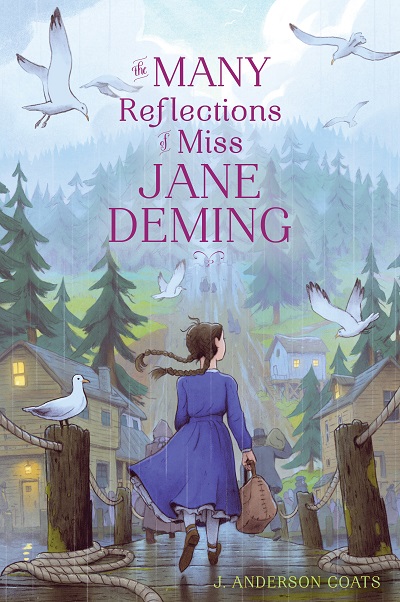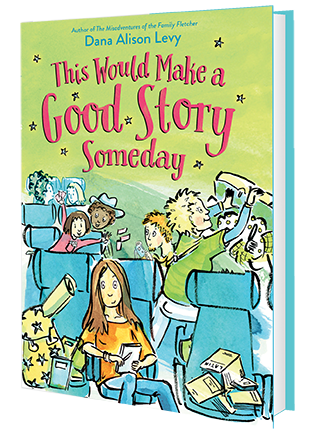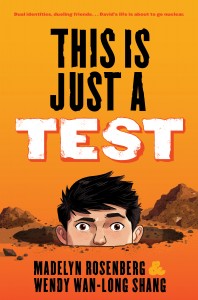


As always, if you have questions, post in the comments, and our guest authors will be checking in throughout the day to respond. Ask away!



As always, if you have questions, post in the comments, and our guest authors will be checking in throughout the day to respond. Ask away!


Tuesday Quick-Write
Setting the Scene: Do more than just see it
First: Choose either a listed prompt and complete it, one of the images provided or a moment from your own work.
A gleaming _______________
An antique _______________
A secret __________________
A pale ____________________
A magical ________________
A suspicious _____________
An abandoned ___________
A broken _________________
A wondrous ______________
A forgotten _______________
A new _____________________
A hidden __________________




Then, once you have a snapshot in your mind, describe it using at least two or three of your senses other than sight. Hear it, taste it, touch it, or smell the scene to bring it to life.
Happy writing!
Our guest author today is the amazing Kat Yeh. Kat is the award-winning author of middle grade novels, THE TRUTH ABOUT TWINKIE PIE (an NPR Best Book of 2015) and THE WAY TO BEA (coming Sept, 2017) from Little, Brown Books for Young Readers, as well as picture book, THE FRIEND SHIP, from Disney-Hyperion. Kat and her family live in one of those crooked little nooks along the north shore of Long Island where they like to spend time exploring all the secret beaches and hidden paths. Learn more about Kat at katyeh.com.
P.S. You pronounce her last name YAY!

THE THING ABOUT THINGS
As writers and storytellers, we want our characters to be interesting and complex and unique. We want them to feel like people in the real world. And the thing about interesting, complex, unique people in the real world is that they usually have very specific interests or obsessions. They usually have Things.
In my first middle grade novel, THE TRUTH ABOUT TWINKIE PIE, my main character GiGi’s Thing was recipes from her dead Mama’s cookbook. When GiGi discovers that a girl from school has revealed an unexpected side of herself that GiGi thinks threatens her close friendship with new best friend, Trip, she reflects on a recipe from her Mama’s cookbook:
All I could think about was this salad DiDi used to make for potluck dinner. It’s covered with this blanket of mayonnaise on top, so you assume it’s all bland and mayo through and through. What you don’t see is that right under that blanket of bland, there’s all this stuff just hiding there. Waiting. Waiting for someone to realize that there’s more to it than just mayo. I used to feel sorry for that salad whenever I saw it sitting there on the table with no one digging in. But now I think it was lying in wait. All mayo and innocence on the outside, not letting us know what it really was on the inside.
This passage is followed by a recipe for Secret Layered Salad. By including recipes in key scenes, I could further the emotions of those scenes and the themes of the story, while also reinforcing this part of GiGi’s world and personality.
In my new middle grade novel, THE WAY TO BEA (Little, Brown Sept 2017), my main character, 12 year old Beatrix, is an exuberant artist and poet whose world turns upside down when she loses her friend group, upon entering 7th grade. By including her poetry throughout the novel, I am able to show how the ways Bea expresses herself change and reflect her emotions. She goes from fanciful free verse painted on her walls to strict haiku secretly scribbled in invisible ink as her world begins to feel unsafe and her actions more guarded. She struggles when she realizes that sometimes what she wants to express might not fit into the rules of haiku.
But just because you act a certain way, that doesn’t mean it becomes true or real.
Does it?
I mean, what if I just started acting differently? What if…I acted that way I wish I were?
if I act the way
I wish I were
am I still acting…or becoming?
Five, four, nine.
Start over.
I watch the lemon juice and water shine and then fade. It doesn’t fit in the haiku structure. But I like it. And I don’t know how else to explain how I feel.
Having a Thing is a great device to show your character’s personality and emotions, but Things are even stronger when they are also tied into the driving force of your plot. Think about Ali Benjamin’s THE THING ABOUT JELLYFISH and her character, Suzy’s obsession with – well, jellyfish and how this obsession plays throughout the storyline. Rebecca Stead’s WHEN YOU REACH ME with Miranda’s reading and rereading of A WRINKLE IN TIME. It may seem like a young girl’s quirky habit at first, but reveals itself to be much, much more.
That’s the thing about Things.
When your character has a deep seeded love, fascination, or interest, their story can unfold and be told in varied and dynamically different and wonderful ways. Which gives our readers all the more ways to connect and invest emotionally in our characters and stories. And isn’t that why we tell stories to begin with?
Your Assignment: Try giving your main character a Thing or a few Things. See what fits. What works. What would help drive your storyline. Write or revisit a passage in which they deal with conflict or deep emotion or sudden joy. Express it through their Thing. Experiment! You might learn something new about your character. And they might surprise you with a hidden layer that you never knew they had.
And here, we have guest author Madelyn Rosenberg! Madelyn is is the author of nine books for kids of all ages, including the Nanny X books and the How to Behave books. She wrote her newest book, THIS IS JUST TEST, with longtime friend Wendy Wan-Long Shang. You can find Madelyn online at www.madelynrosenberg.com or @madrosenberg on Twitter. Today, she’s joining us to talk about collaboration.


I sit and write in the world’s messiest office, where my only companions are often an exercise bicycle bedazzled with my most recent laundry and the braver of my two cats. Many writers I know spend their days (or nights) in similar situations, dependent, of course, on cat allergies, cleanliness habits, and whether or not they have invested in a standing desk. We take community where we can find it: In critique groups, at guild meetings, during an occasional Thursday write-a-thon at the Rock n’ Joe.
In a world that’s filled with rejection, even for published writers, it’s essential to have community support. I always find it’s easier to write knowing that someone’s out there waiting for Chapter 2. Over the past few years, I reached out to my writing community in a different way, by collaborating with a writing partner – with Mary Crockett for Dream Boy and most recently with Wendy Wan-Long Shang for This is Just a Test.
For me, collaboration was a real gift. It can be a gift for students as well. Sure, there might be frustrations if a partner takes you down a path you don’t want to follow or imbues a character with a trait you are certain she doesn’t have. But collaborative writing also gives you an editor, even as you write those first paragraphs. It helps you beat writer’s block. It gives you encouragement: you can do this, partner. With students, it also serves as an ice breaker and motivator, and increases both self confidence and self esteem (really: Google it.) I know it did for me.
All of this is a long way of getting to today’s writing prompt, which requires you to find a partner, if just for one day. You can try this with someone in Teacher’s Write, with your kid, your Uncle Buck, your mail carrier – anyone who’s willing. Two choices follow.
Your Assignment:
Option one: An exquisite corpse. You may have done this with pictures when you were a kid: someone draws the head, marks where the neck begins, folds the paper over, and hands it to the next person who draws the body without ever seeing the head. Here you’re doing the same thing, only with words. Have someone begin a story with just a paragraph or so, and pass it to the next person, who writes the middle. It goes back to player one for the beginning of the ending and back to player two for the final lines. You may take turns either virtually or on real paper. Provide your partner with the last three words from the last sentence of each section as a hook, an inspiration or a tease. The results show you how just a few words can generate thoughts, dialogue and plot.
If you want to your collaborative writing experiment to be more, well, collaborative, try option two: Do the same assignment, swapping paragraphs back and forth, only don’t hide anything. Discuss your character and plot. Give each partner a chance to tweak and edit and add lines to the parts he or she didn’t generate. If you want this one to be a little longer, that’s fine, but try to keep it to five or six paragraphs, max. (It’s a quick write, after all.)
If you have time and a willing partner, feel free to try both options.
In the comments, let us know which option you tried and how it worked for you. Were you funnier or more dramatic because you knew someone else would be seeing your words right away? More self conscious? Less self conscious? Were you surprised at the turn your story took? More confident in the final results?
I do this prompt with my family (the no-peeking version) when we’re on car trips or in restaurants. We especially like playing in large groups, where each person contributes a single line, with no clue as to what’s come the line before. The outcome is often more a surreal poem than a story, but we always end up laughing.


One of my favourite writing prompts is also one of the simplest, but I find it extremely powerful, especially when I’m trying to tease out a fledgling idea, brainstorming, or just writing to write without an end “product” in mind.
I think it works best at the end of the day, or first thing in the morning. But I am not one for hard and fast rules when it comes to writing, so work it out the way it works best for you.
Your Assignment: Spend at least fifteen minutes writing down the last 24 hours, just listing what you
a) did, and
b) noticed.
That’s it! Usually, after a while, I begin to see patterns, and what Don Murray called my “writing territories,” the things that I know and care about a lot. You might see many different variations on a theme, or realize that there is this one thing that your whole self is crying out to write. Almost every time, I’m surprised, and it leads me in new and beautiful and strange and well-loved and tedious and slightly scary directions. Which is how writing often is, all at once, yeah?
As always, feel free to share a reflection in the comments!



As always, if you have questions for the group, or for a specific author, just post in the comments. They’ll be checking in throughout the day to respond.

Getting started is often one of the hardest parts of writing—or anything, really.
Because I write fiction and nonfiction for a variety of ages, I’ve faced a lot of blank pages. One of the best ways I’ve found to get started is to have a little bit of help. Writing prompts in general can be useful. And I find all sorts of them in research, whether I’m writing fiction or nonfiction.
Here are some of my favorite places to dig up research-based nuggets:
The New York Public Library Digital Collection: This is a huge archive full of images, newspaper clippings, and other documents. This link is to the last letter Alexander Hamilton wrote his wife before he was shot to death. It’s fascinating all by itself. But it also makes a writing prompt: Consider writing your character’s last letter to someone he or she loves. That someone can be a child. An exceptionally gifted pet. A criminal who needs to receive on a secret message. Or it can be something your main character receives.
Internet Archive: This site has a variety of digitized media, including old newsreels and audio reels. When I was researching The Game of Love and Death, a historical novel set in 1937, I used video of the Hindenburg tragedy as the basis for a scene.

I’d listened to the audio recording of it in a chemistry class when I was 12, and remembered it always because it was so vivid (which is why it’s not for every student. Still, it’s interesting.)
One of the first things I did when I decided to set the book in 1937 was look at a list of things that happened that year.
As your story prompt, search on a year (or use the one your story takes place in, or the year a character was born). Find a great vintage photo like this one, and write about someone in it receiving the best news of their life—which they are unable to enjoy. https://archive.org/details/1937KSUcollage
One of my pet peeves is the preponderance of full moons in movies. With The Game of Love and Death, I took care to make every moon phase accurate. It became a good creative constraint. What did my characters think when they looked up to the sky and found it empty of moon?
Your assignment: Look up the moon phase on your character’s birthday, or some other significant date in your story. (If you don’t have a work in progress, choose a date like your own birthday!) Write a scene about a character doing something in the light of that moon. And as always, feel free to share a snippet of what you wrote in the comments!
Today’s a special day because I get to introduce you to a brilliant debut author who’s also a friend.
Margaret Powell is a decorative arts historian from Pittsburgh, Pennsylvania. She is the Curatorial Assistant of Decorative Arts and Design at the Carnegie Museum of Art and she writes about fashion history on her website www.hiddenfashionhistory.com. Margaret and I are the co-authors of an upcoming picture book called ONLY THE BEST: THE EXCEPTIONAL LIFE AND FASHION OF ANN LOWE, coming soon from Chronicle Books. (We don’t have a cover to share quite yet, but it’s being illustrated by Erin Robinson, and we’re both so excited!) Margaret’s post this morning is all about biographical research!

I started learning about Ann Lowe during an internship in 2011. The chief curator wanted to know more about the designer of a dress in our collection and the existing scholarship available about Ann at that time boiled down to brief profiles in two 1980s books about African American fashion designers and a journal article written in the late 90s for the Alabama Historical Society. Not a lot of info, but they led me to a magazine interview Ann gave in the 1960s. Her story fascinated me, but from source to source, many details about her life were inconsistent.
Working to make sense of those mixed up facts turned into my masters thesis and this was the first biographical research I ever really attempted. To have enough information for my thesis, I needed dresses to study, former clients to interview and hopefully, some family members. Ann’s career spanned sixty years and three states: Alabama, Florida, and New York. I had the budget of a student, so research trips were limited and finding primary sources was a challenge.
A lot of Ann’s dresses are in museums, but the biggest collections nearby were not available for research that summer. The Metropolitan Museum had ten, but they were renovating the Costume Institute. The Smithsonian had a few, but those were caught up in inventory and research for the new National Museum of African American History and Culture. The JFK library held Ann’s most famous work: Jacqueline Kennedy’s wedding dress. That dress was permanently off limits to researchers (especially students!) because of condition issues. With all of those barriers, I wasn’t sure where to start at first, but then I thought about newspapers. Newspapers are a fabulous starting point!
All in all, my strongest research has been a result of interviews (in person and over the phone), but those take time to arrange, so they usually won’t be your first step. At the beginning of biographical research, newspapers and public records can give you the info you need to track down those living people. Genealogybank.com is my favorite website for this, because of their strong regional newspaper offerings, but if you have a membership with Ancestry.com, or one of the other genealogy sites, or even the New York Times, you already have access to some extensive newspaper archives.
What are you looking for? If your subject is well known, there could be interviews, profiles, book and tv reviews. Ann wasn’t well known, but she had a lot of well known clients and she created dresses for one of the most popular annual events in Tampa: the Gasparilla festival. Ann’s dresses show up on the front page of the Tampa Tribune throughout the 1920s and they are also described in detail inside.

Ann is never named here, but when I learned about her Gasparilla work, the rest was easy. The names of her customers led me to living granddaughters of those customers, and one of those ladies even mailed me an Ann Lowe dress to borrow for my research!
Obituaries may be the first link to finding living relatives. Wedding announcements will also help you to keep track of name changes.
The census can be another treasure trove of information and give you countless jumping off points. Google Books and Archive.org often have full scans of directories and trade journals from professional organizations. If your subject was a professional or an artisan, you may be able to find information that way.
Your Assignment: Choose someone you’d like to research. What can you find out about your subject through public records (the census, marriage, military, and death records), newspaper and genealogy websites? Has your subject ever given interviews to magazines or on television?
If you wish to keep going, on your own, create a list of five living people associated with your subject and reach out to them for interviews. Interviews can be in person, over the phone, or in writing (I started with a questionnaire to send out to a dozen of Ann’s former clients. Five of those people replied). These can surprise you. Descendants of Ann Lowe’s business partners, and a few of Ann Lowe’s 1960s bridal customers have been my greatest help! I hope you have fun while you uncover some interesting information about your subject!
As always, feel free to share a bit of your thinking in the comments today to continue the conversation!
Also, Erica Perl, our guest author here today, has some revision tips to share! Erica is 3 of the 4 following things: 1) the author of picture books including Chicken Butt! and Goatilocks and the Three Bears; 2) the author of middle grade novels, including When Life Gives You O.J. and the forthcoming All Three Stooges; 3) the author of plays including The Capybara Conspiracy; 4) a hilarious public speaker; 5) terrible at math.


Six Reasons to Strip Down to Your Underwear and Read Your Work Aloud
An important piece of the editing process is reading your work out loud in your underwear. Not in front of an audience, mind you. But just to yourself (or, if you’d prefer, to supportive pets and houseplants). I find this to be an invaluable step, whether I am working on a picture book, an early reader, a play, a poem, or a novel.
Here are six reasons why you should do this:
1) Certain words or turns of phrase will trip you up, even though you’re the one who wrote them. This is particularly important in picture books or anything else that’s designed to be read aloud. If you stumble over it, chances are your reader will, too.
2) In a rhyming piece, you’ll also notice – most of the time – if your rhymes or meter are off. I say most of the time because you can actually force both things without intending to, so pieces that are written in rhyme require the additional step of having someone else read them aloud to you (you might want to put on a bathrobe for this). Ideally someone who has not heard you read this particular piece aloud before, so as not to be influenced by your patterns of inflection.
3) Your brain and your mouth will instinctively try to improve your work as you read. So, for example, if you used the word “kind” in a sentence you may find that you replace it aloud with the word “generous” if that’s really what you meant. Take note of this!
4) Your ear will notice which lines of dialog sound like the way people actually speak, and which sound “written” (the kiss of death, unless for some reason that is your intention).
5) You will discover how the rhythm of your piece works. For example, you’ll get a sense of which parts of your piece are too “talky” and need to be pulled back or balanced with more action, visual storytelling (in an illustrated book) or silence.
6) You will notice your bad habits, like specific words and phrases you lean on too hard, and you’ll discover excess words that you can part with. Half the battle of writing, in my opinion, is figuring out which words you don’t need.
With an audience of actual people (fully clothed, please!), you can of course discover many more things, like which of your jokes are actually funny and whether your plot makes any sense. But before you take that step, do your writing a favor: find a quiet place and read it out loud to yourself. And while the in-your-underwear component is optional, since you’re the only one there (except for the pets and houseplants), why not? Summer is the perfect time to shed clothes, and reading aloud is the perfect way to shed whatever’s holding your writing back.
After you do, leave a comment to share the most surprising thing you learned about your writing from trying this exercise!


I’ve spent my share of time in waiting rooms, as has anyone with the resources and good fortune to have access to health care, and they’re places with a distinctly complex blend of emotions relating to the past, present, and future all at once. A child waits for her very first dental appointment, knowing that her teeth were just on every previous day, thank you very much, not really liking the animated movie that’s showing on the TV screen up in a corner of the ceiling, and feeling nervous that her immediate future might include some drilling; a couple with matching white gold bands on their fingers sits on the edge of a waiting room couch, feeling the aches in their joints, clutching a bouquet of orchids in a long box and an oversized teddy bear, visibly impatient to meet their new granddaughter; a college student slumps in a hard plastic waiting room chair, staring blankly at his phone, hating his father for refusing to give up the cigarettes that gave him lung cancer, and drowning in guilt for feeling that hatred when his father’s on the verge of death.
Your Assignment: Think up a situation in which a character is waiting in such a room. Are they there for an appointment or an emergency? Are they there alone? If not, did they bring someone there, or are they arriving to see someone who’s already there? What might happen once they leave the waiting room? And here’s the pot of gold: when they sit down in that waiting room and start to wait in earnest, what’s the very first thought that goes through their mind? Spend a little time writing in response to this prompt, and then feel free to share a snippet of your writing for today in the comments if you’d like!